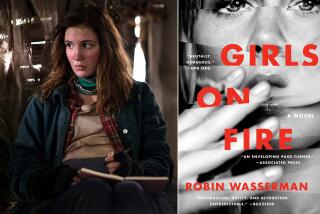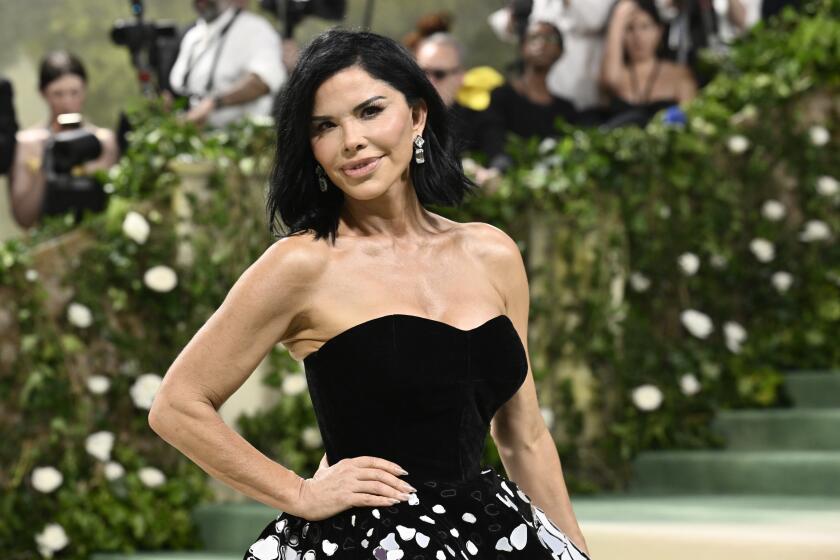Return to Narnia
A remarkable critic, C.S. Lewis was generous and acutely sensitive to the way literary works create their own worlds. Other critics have not returned the favor, no doubt because Lewis’ best-known writings seem to dictate their own interpretations. The meaning of his Christian apologetics is obvious, and so, most people feel, are the intentions of his popular series of children’s novels, “The Chronicles of Narnia.”
Lewis argued that the first published volume of the “Chronicles,” “The Lion, the Witch and the Wardrobe,” wasn’t an allegory of the Passion of Christ, because it wasn’t an allegor y as he, a medievalist, defined the term. It’s true that “The Lion, the Witch and the Wardrobe” is not a symbolic pageant like “The Pilgrim’s Progress,” in which abstract notions appear embodied as people or places labeled “Hypocrisy” or “The Slough of Despond.” But for most modern readers, it’s close enough.
Most readers, that is, except a key constituency: children. Even kids with solid Christian educations tend to miss the subtext of “The Lion, the Witch and the Wardrobe.” Lewis, an Oxford don from a conventionally Protestant family, wanted to present Christianity freed of the “stained-glass and Sunday school associations” that had alienated him as a teenager. He hoped his story would sneak past the “watchful dragons” of skepticism.
He succeeded, perhaps too well. The coming release of a lavish movie version of “The Lion, the Witch and the Wardrobe” has reminded many adults of their youthful love for Narnia -- a love that often failed to translate into Christian faith. For some (like, I confess, myself) the revelation of Lewis’ secret agenda registered as a terrible betrayal, further proof that even the most apparently sympathetic adult is always working an angle.
That disillusionment hints at an unexplored territory in Narnia. If the “Chronicles” were merely religious allegory, there would be nothing to betray, and furthermore, the books might not be literature. A literary work, after all, admits multiple, sometimes contradictory understandings. Crudely put, the children in “The Turn of the Screw” could be haunted, or their governess could be mad. Gatsby is a tragic hero, or he is a dupe of the American dream. Because Lewis was frank about his desire to indoctrinate his readers, the Narnia books seem inhospitable to this kind of attention. More so than most books for children, they are seen -- incorrectly -- as pedagogical and therefore not very interesting.
As a result, anyone prompted by the movie to seek out further reading on Narnia will be greeted by a shelf-full of mediocrity. There’s no shortage of titles -- “The Way Into Narnia: A Reader’s Guide,” by Peter J. Schakel (William B. Eerdmans: 206 pp., $14 paper), “Pocket Companion to Narnia: A Concise Guide to the Magical World of C.S. Lewis,” by Paul F. Ford (HarperSanFrancisco: 368 pp., $9.95 paper), “The Heart of the Chronicles of Narnia: Knowing God Here by Finding Him There,” by Thomas Williams (W Publishing: 202 pp., $13.99 paper), and even “C.S. Lewis & Narnia for Dummies,” by Richard J. Wagner (Wiley: 364 pp., $19.99 paper). Yet while Lewis’ young fans are fairly diverse, the adults who study him are almost exclusively Christians of a mild-mannered, evangelical (although not fundamentalist) bent. They regard his writings as a hair less exalted than Scripture, and Lewis as a kind of Protestant saint.
Perhaps believers won’t mind seeing works of imaginative fiction shackled to the task of theological instruction. But surely no sensible person can credit the most reverent depictions of Lewis, who was in reality a complicated, flawed and occasionally boorish man. For the non-Christian, even the best-written of the new books -- like Alan Jacob’s biography of Lewis, “The Narnian: The Life and Imagination of C.S. Lewis” (HarperSanFrancisco: 368 pp., $25.95) -- offer limited insight. Like public radio hosts during a pledge drive, these authors always return, too soon and for too long, to the pitch.
A couple of anthologies published to coincide with the release of the film version of “The Lion, the Witch and the Wardrobe” let in a bit more air. “The Chronicles of Narnia and Philosophy” (Open Court: 304 pp., $17.95 paper), edited by Gregory Bassham and Jerry L. Walls, and “Revisiting Narnia: Fantasy, Myth and Religion in C.S. Lewis’ Chronicles” (BenBella Books: 310 pp., $14.95 paper), edited by Shanna Caughey, contain essays by writers who consider Narnia from pagan, feminist and even animal-rights perspectives. Too often, though, these critiques offer little more than another flavor of doctrine, looking at Lewis through the filter of his opinions about, say, dark-skinned people or vegetarians. Critics who do no more than tease out a book’s “messages” fall short, for no one but the grimmest adult reads a story for its moral. They tell us only how Lewis wanted us to live, not how he made us want to live in Narnia.
Perhaps the most dismaying aspect of the “Chronicles” is a profound discomfort with adult women, as Cathy McSporran skillfully details in her essay “Daughters of Lilith,” which appears in “Revisiting Narnia.” The “Chronicles” are full of brave and endearing girls, but sexuality throws a wrench in the works. The series’ most powerful villains are beautiful, vainglorious seductresses, and one girl is excluded from the climactic reunion of the seventh volume, “The Last Battle,” because her head has been turned by “nylons and lipstick and invitations.”
McSporran is far from the first to notice this; British children’s novelist Philip Pullman has made Lewis’ purported misogyny a keystone in his public denunciation of the “Chronicles.” But it’s one thing to point out obnoxious or regrettable ideas and another to ask what role they play both in the books and the hodge-podge of source materials Lewis incorporated into the “Chronicles.” The evil White Witch in “The Lion, the Witch and the Wardrobe” derives from the Bad Mother tradition in fairy tales, while the Green Witch in “The Silver Chair” seems to have migrated from the little-people folklore that inspired Rip Van Winkle. Or maybe Lewis’ discomfort with female characters has roots in the British “Boys’ Own” stories from which he borrows some situations and a rough sense of manners. Is this uneasiness somehow essential to the genre in the way that missing parents are to most children’s adventure stories, and if so, why?
Lewis’ friend J.R.R. Tolkien was disgusted by the junk-drawer miscellany of Narnia. Tolkien’s Middle-earth was built on a foundation of concocted genealogies and languages, which is one reason his work spawned a genre of ersatz scholarship that -- “Pocket Companion to Narnia” notwithstanding -- the “Chronicles” could never support. (It also lends Tolkien’s work a somewhat unearned aura of adulthood. Lewis’ fiction -- in which evil arises from the mundane human propensity for pride and selfishness, without recourse to a magical token like the Ring of Power -- is arguably more morally sophisticated.) Besides talking animals, Narnia is populated by creatures from classical and Norse mythology (centaurs, dwarfs) and European folklore (werewolves, giants), with echoes of chivalric romance.
Narnia is, in short, a mess, cobbled together from the stuff Lewis liked, with a few of his prejudices thrown in. Its inconsistency, though, is superficial. The “Chronicles” have a powerful imaginative unity despite their polymorphous origins and rather slapdash composition. (Lewis was not a rewriter.) They are linked by a heady amalgam of voice, story and imagery, and they cast a spell that has driven children to rummage in wardrobes for more than 50 years. As adults, we marvel at the intensity of our childhood yearning for Narnia, the kind of unquenchable desire that Lewis cultivated in himself and called “joy.”
Lewis’ most devoted disciples point to his faith as the principle that animates Narnia, that makes us believe. But how to explain the “Chronicles’ ” allure for those who have remained impervious to Christianity, even after it was revealed to be the supreme mythos behind the stories we adored? Why do we introduce our children to the books when we have no intention of raising them in the religion? The ostensible purpose of the “Chronicles of Narnia” is to make Christians of us, but when this fails, we still have something left over. Describing that something is the proper job of literary critics, and it remains undone. *
More to Read
Sign up for our Book Club newsletter
Get the latest news, events and more from the Los Angeles Times Book Club, and help us get L.A. reading and talking.
You may occasionally receive promotional content from the Los Angeles Times.







